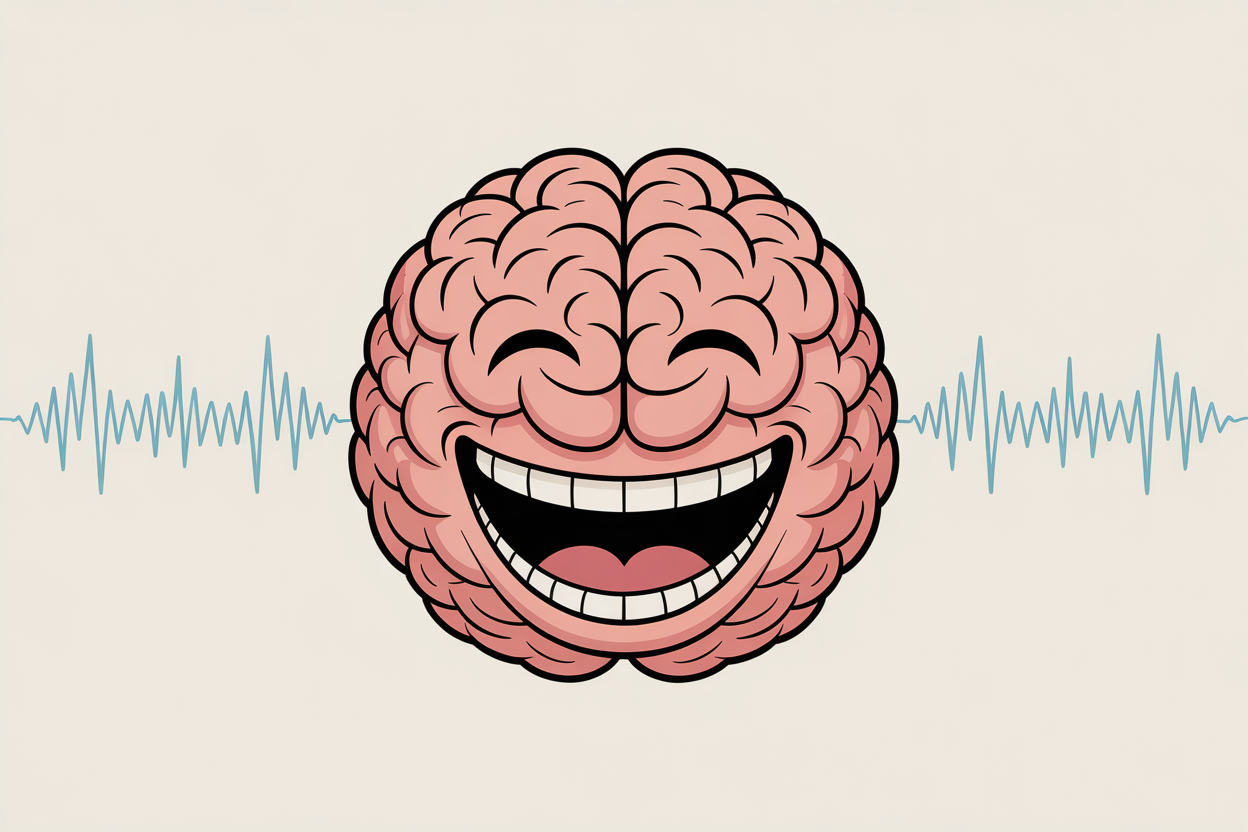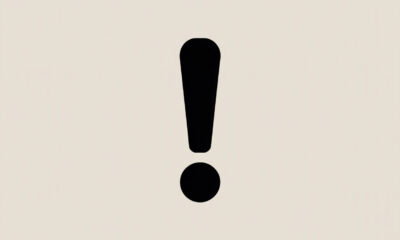informational
What Makes a Joke Funny? The Psychology Behind Humor Explained

Millions of people laugh at jokes every day, yet most cannot explain why something is funny. Our brains process humor through mechanisms that scientists are still decoding (see Humor research on Wikipedia). Research from neuroscience and psychology reveals that what makes us laugh involves multiple brain systems working together, from detecting unexpected patterns to releasing feel-good chemicals. Understanding humor psychology provides fascinating insights into how our minds work and why certain things trigger that unmistakable reaction we call laughter.
How Your Brain Processes Jokes
When you hear a joke, your brain starts a sequence of operations in milliseconds. First, language processing centers decode the words. Then, your frontal cortex and temporal regions work together to detect incongruities, the mismatch between what you expected and what happened. Finally, when the punchline clicks, your brain’s reward system activates, releasing pleasurable neurochemicals ^(1).
This process explains why some people “get” jokes faster than others. Those with higher cognitive flexibility can quickly shift between different mental frameworks, making them quicker to recognize the twist in a punchline. Meanwhile, those with better-developed social cognition excel at jokes requiring “theory of mind”, understanding others’ perspectives and intentions.
The Three Main Theories of Why Things Are Funny
| Theory | Core Concept | Example | Neural Basis | Limitations |
|---|---|---|---|---|
| Incongruity Theory | Humor arises from unexpected connections or violations of expectations | Wordplay and puns that create dual meanings | Frontal cortex and temporal regions detect and resolve incongruities | Can’t explain why some incongruities aren’t funny |
| Superiority Theory | We laugh when feeling superior to others or our past selves | Self-deprecating humor, satire, teasing | Activates reward centers related to social status | Doesn’t account for abstract or nonsensical humor |
| Relief Theory | Humor releases psychological tension around taboo subjects | Jokes about death, sex, or controversial topics | Reduces limbic system activation, releases endorphins | Fails to explain simple wordplay or logical humor |
Incongruity Theory
Most cognitive scientists agree that incongruity is at the core of humor. We find things funny when they violate our expectations in surprising but resolvable ways ^(2). Consider this joke:
“I told my wife she was drawing her eyebrows too high. She looked surprised.”
The humor comes from the dual meaning of “surprised”, both an emotion and the appearance created by high-drawn eyebrows. Your brain enjoys resolving this unexpected connection. If the incongruity is too confusing or too obvious, the joke falls flat.
Superiority Theory
Dating back to Plato and Aristotle, this theory suggests we laugh when feeling superior to others or our past selves. This explains everything from playground teasing to sophisticated satire. Self-deprecating humor works similarly, we laugh at our former mistakes from a position of current wisdom.
The Dark Side of Superiority Theory
Superiority theory also explains how humor can be used for bullying and creating harmful social dynamics. When humor is used aggressively, perpetrators experience an enhanced sense of dominance and lower empathy, while victims may internalize negative self-perceptions, leading to isolation and anxiety. Observers, through their reactions, reinforce group boundaries and social hierarchies. This psychological mechanism explains why disparaging jokes feel different depending on whether you are part of the targeted group or the group doing the targeting.
Relief Theory
Freud proposed that humor releases psychological tension, particularly around taboo subjects. Think about how we joke during funerals, after narrowly avoiding accidents, or about sensitive topics. These jokes let us express otherwise forbidden thoughts in socially acceptable ways.
This explains why nervous laughter happens in inappropriate situations, it’s your brain’s attempt to discharge anxiety. When a comedian tackles controversial subjects, they are providing psychological relief by addressing what normally goes unspoken.
What Happens in Your Body When You Laugh
Genuine laughter triggers an impressive physiological response. Your brain releases endorphins in multiple regions, including the thalamus, caudate nucleus, and anterior insula. These natural opioids create pleasure, mild pain relief, and, crucially, social bonding effects ^(3).
Two Types of Laughter: Genuine vs. Social
Scientists distinguish between Duchenne laughter (genuine, spontaneous) and non-Duchenne laughter (social, voluntary). They activate partially different neural pathways, though both are coordinated in the dorsal upper pons of your brain.
| Aspect | Non-Duchenne Laughter | Duchenne (Genuine) Laughter |
|---|---|---|
| Nature | Voluntary, controlled, strategic | Involuntary, spontaneous, emotionally driven |
| Social Function | Manages power dynamics, signals deference/dominance | Reinforces authentic bonding, egalitarian |
| Professional Impact | Facilitates cohesion but can be manipulative | Builds genuine team spirit and trust |
| Relationship Effects | Perceived as less authentic, limited bonding | Strengthens closeness and shared support |
| Well-being Benefits | Limited psychological benefits | Linked to endorphin release, stress reduction, social bonding |
Non-Duchenne laughter appears frequently in professional environments where employees use it to manage power structures and in social hierarchies to signal deference or reinforce dominance. People also use it in awkward situations to manage discomfort through polite laughter.
This physiological response explains why “laughter is the best medicine” is not just a saying. Regular genuine laughter measurably improves immune function, reduces stress hormones, and increases pain tolerance ^(3).
The Modern Understanding: Benign Violation Theory
Contemporary humor researchers have developed the Benign Violation Theory (BVT), which integrates previous approaches. BVT proposes that humor occurs when something is simultaneously:
- A violation (of norms, expectations, or rules)
- Benign (safe, acceptable, or non-threatening)
If something is only a violation, it is threatening or offensive. If it is only benign, it is boring. The sweet spot where violation meets benignity is where humor emerges. A 2024 study in Frontiers in Psychology provided empirical validation for BVT and its cognitive underpinnings ^(4).
Practical Joke Construction Using BVT
Setup Phase:
- Build clear expectations with familiar situations
- Establish relatable scenarios that invite specific predictions
- Avoid humor in the setup to preserve surprise
Punchline Phase:
- Create surprising yet resolvable incongruity
- Overturn audience assumptions with logical connections
- Use wordplay, perspective shifts, or absurd juxtapositions
Audience Assessment:
- Choose universally relatable topics for broader appeal
- Signal benign intent when approaching sensitive subjects
- Monitor reactions and adjust delivery accordingly
- Use personal vulnerability rather than attacking others
This explains why:
- Tickling by a stranger is threatening, but tickling by a friend is funny
- Mishaps that cause minor embarrassment are funny, while serious injuries are not
- Jokes about sensitive topics can be hilarious or offensive depending on context and delivery
Why Social Context Makes Things Funnier
Ever noticed how you laugh more in groups than when alone? This is not coincidental. Laughter evolved primarily as a social bonding mechanism. In early human groups, laughter helped maintain cohesion in groups too large for physical grooming to sustain relationships ^(5).
Research shows the same comedy content provokes 30% more laughter in social settings than when experienced alone. This social amplification happens because laughter signals safety and acceptance within a group, shared humor creates a sense of “us,” and social laughter releases more endorphins than solitary amusement.
Power dynamics significantly influence what is considered funny. A joke from a subordinate might seem inappropriate, while the same joke from an authority figure seems hilarious. Similarly, humor that reinforces group identity strengthens social bonds, while humor that challenges group norms can create tension.
Humor’s Role in Evolution and Mate Selection
Humor as an Honest Signal
Modern evolutionary psychology suggests humor functions as an “honest signal” of cognitive fitness, creativity, and genetic quality in mate selection. This theory explains several key patterns.
Supporting Evidence:
- Sexual Selection Patterns: Women consistently prefer men who produce humor (indicating intelligence and good genes), while men prefer women who appreciate their humor.
- Cognitive Fitness Display: Humor production requires advanced cognitive skills, including creativity, mental flexibility, and emotional intelligence.
- Honest Signal Mechanism: Successful humor requires spontaneous creativity that cannot be easily faked, making it a reliable indicator of underlying cognitive ability.
Research findings show individuals rated as funnier tend to have higher IQs and are perceived as more intelligent and attractive. Neurocognitive studies reveal humor processing overlaps with creativity centers, requiring the ability to connect disparate ideas spontaneously.
Individual Differences in Humor
Personality and Humor Preferences
Your personality strongly predicts your humor preferences:
- Extraverts typically enjoy affiliative humor that enhances social bonds.
- Those high in openness appreciate complex, novel, and absurdist humor.
- Neuroticism correlates with self-defeating humor styles.
- Agreeableness predicts less enjoyment of aggressive or disparaging humor.
How Mental Health Affects Humor Processing
Negative emotional states and mental health conditions significantly alter humor appreciation through specific neurological and cognitive changes.
Neurological Impact:
- Decreased activity in the frontal lobe and reward system regions.
- Reduced dopamine, endorphin, and serotonin release during humor exposure.
- Impaired reward system responsiveness.
Cognitive Changes:
- Reduced cognitive flexibility needed for perspective-shifting.
- Impaired ability to detect and resolve incongruities.
- Decreased accuracy in identifying punchlines.
- Negatively biased processing of positive stimuli.
Specific Conditions:
- Depression/Anxiety: Blunted humor ratings and impaired incongruity detection.
- High Stress: Reduced cognitive resources for processing humor subtleties.
- Sadness: Diminished capacity for humor appreciation and production.
Age and Cognitive Factors
Humor appreciation evolves across the lifespan. Children initially enjoy simple physical comedy and repetition before developing a more sophisticated understanding of wordplay and sarcasm. Adolescents often use humor to test boundaries and establish identity.
As we age, our humor preferences shift again. Older adults may struggle with complex linguistic humor due to cognitive processing changes but often maintain or even increase their appreciation for social and affiliative humor.
Gender Patterns in Humor
Research consistently shows men are more likely to produce humor while women are more often in the appreciative role. Men typically prefer aggressive, sexual, or status-enhancing humor, while women generally favor absurdist or nonsensical humor.
These differences stem from evolutionary, neurological, and social factors. From an evolutionary perspective, humor production has historically served as a status and mating display for men, while women’s selective appreciation of humor helps identify cognitively fit partners.
Cultural Differences in What’s Considered Funny
Humor varies dramatically across cultures. Western societies generally view humor as positive and valuable for coping with adversity. In contrast, many Eastern cultures traditionally approach humor with more ambivalence, sometimes seeing excessive humor as inappropriate in formal contexts.
Cultural differences affect not just when humor is appropriate, but what types of humor resonate:
- American humor often celebrates individualism and direct confrontation.
- British humor typically features self-deprecation and dry understatement.
- Japanese humor frequently involves wordplay and situational incongruity.
- German humor often centers on structure and planning.
Language-specific features create additional challenges. Puns, spoonerisms, and other wordplay often fail to translate, as they depend on specific linguistic properties. This explains why subtitled comedy often feels less funny than in its original language.
Why Some Jokes Fall Flat
Understanding humor psychology explains why jokes fail in predictable ways:
- Timing problems: The brain needs time to build expectations before they are violated. Rush the setup, and the punchline lacks impact.
- Audience mismatch: A joke requiring advanced theory of mind will fall flat with young children; political satire fails without shared context.
- Violations that are not benign enough: When a joke crosses from “edgy” to genuinely threatening for a particular audience, laughter is replaced by discomfort.
- Overly complex incongruities: If resolving the incongruity requires too much cognitive effort, frustration replaces amusement.
- Predictable punchlines: When the brain anticipates the twist, the surprise element disappears, and so does the humor.
The delivery matters as much as content, the same joke can succeed or fail based on timing, confidence, and the established relationship between speaker and audience.
Frequently Asked Questions
What causes you to laugh?
Laughter is triggered when your brain detects a benign violation of expectations. Neurologically, this activates your frontal cortex (recognizing the incongruity), followed by your limbic system (emotional response), leading to the physical response we call laughter ^(1).
Why is laughter contagious?
Laughter is contagious because we have specialized mirror neurons that activate when we see others laugh. This evolved as a social bonding mechanism, hearing laughter signals safety and group acceptance ^(5).
What emotion goes with laughing?
Joy is the primary emotion associated with genuine laughter, but laughter can also accompany relief, surprise, embarrassment, or even discomfort. The emotional context affects which neural circuits are activated during laughter ^(3).
What is laughing scientifically?
Scientifically, laughter is a rhythmic, vocalized, expiratory pattern with distinctive neurological signatures. It involves coordinated contraction of 15 facial muscles, alterations in breathing patterns, and activation of the limbic system. From an evolutionary perspective, it is a social signaling mechanism that predates language ^(5).
Humor appreciation involves multiple brain systems working together, from language processing to emotional regulation to social cognition. What we find funny reveals how our brains detect patterns, process contradictions, and manage social relationships. Understanding humor psychology helps us appreciate both the sophistication of our cognitive abilities and our fundamental human need for laughter and connection.
^(1) https://pmc.ncbi.nlm.nih.gov/articles/PMC4991054/
^(2) https://en.wikipedia.org/wiki/Theories_of_humor
^(3) https://www.medicalnewstoday.com/articles/317756
^(4) https://www.frontiersin.org/journals/psychology/articles/10.3389/fpsyg.2024.1288104/full
^(5) https://royalsocietypublishing.org/doi/10.1098/rstb.2021.0176
















